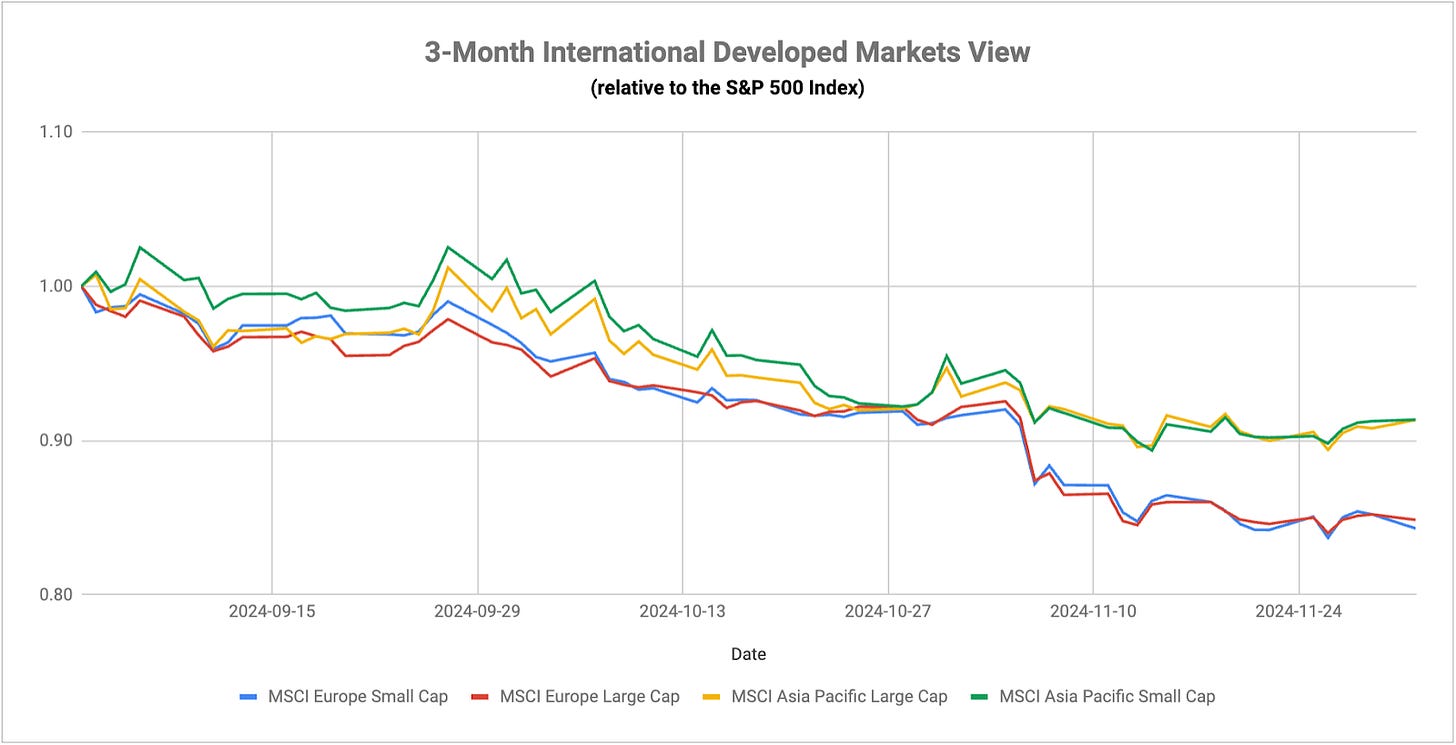A higher than expected JOLTS job openings report should serve as a reminder that we can’t ignore potential issues with the labor market. Even though the October number only brings it back to the trendline of the past six months or so, continuing jobless claims have been steadily on the rise since this past spring. This week’s non-farm payroll number is likely to rebound from last month’s disappointment and the unemployment rate is still around 4%, so it’s not fair to say the labor market is breaking exactly. I do think it continues to cool and that’s going to be something to monitor in 2025. If tariffs become a bigger thing in the new year, it’s reasonable to think that companies could consider layoffs to balance out some of the additional costs (if they don’t pass them entirely on to the consumer). I’ll also be interested to see how the push by some companies to return employees back to the office full-time could affect the labor market. They could be getting used as a means to reduce headcount without layoffs and that could soften conditions in the near future.
This has raised the odds in the futures market of a December rate cut by the Fed. Last week, the odds had dropped all the way to around 60%, but now stand at about 76%. The idea of cutting into a healthy economy where liquidity is likely to keep growing, inflation is re-accelerating and credit spreads are near all-time lows seems very dangerous. Inflation is already trending higher worldwide and major central banks are going to continue cutting rates from probably at least a few more quarters (a 50 basis point cut appears to be on the table now for the ECB). The U.S. economy experienced a huge 2nd wave of inflation back in the late 1970s after the Fed brought interest rates way down. The inflation rate went from 11% down to 4% and back up to 14% before all was said and done. Are we setting up for a repeat? It can’t be ruled out since the Fed seems to be readying itself to move in the opposite direction of where trends seem to be going.
On the economic growth front, everything is still looking pretty good for now. The Atlanta Fed’s estimate for the Q4 GDP growth rate is currently 3.2%. That would be higher than the 2.8% rate that was printed last quarter and suggests that recession won’t be a concern for at least another couple quarters. Combined with Trump now threatening tariffs of 100% on certain imports (which seems unlikely), this has killed the short-term rally in Treasuries and has sent yields higher again. Whether the tariffs come to fruition, inflation is back on the rise across the world and that’s likely going to help prevent a significant rally in Treasuries here unless we get a significant negative catalyst that sets off the flight to safety trade.
From an equity perspective, the defensive shift that we’ve seen over the past couple weeks looks like it’s having trouble holding on. The positive data that we continue to see just hasn’t been conducive to risk-off assets gaining any sustainable momentum. The most likely catalyst to potentially reverse this would be around the December 19th BoJ where an unexpectedly hawkish stance could reignite the reverse carry trade unwind and send equities lower like it did earlier this year.
We’re just two weeks away from the Bank of Japan’s policy committee meeting. The big questions remain 1) will the central bank pull the trigger on another quarter-point hike and 2) will they signal any further hawkish moves in the future. The odds of a December hike are somewhere in the 50-60% range right now, which means there’s enough uncertainty that a hike could instigate a reaction in the equity and bond markets as well. Whether the BoJ moves in December might ultimately be a moot point because the market is pricing in a roughly 90% chance of a hike by the end of January. In other words, it’s coming sooner or later. That means the yen has the fuel to continue accelerating and that’s going to be a headwind for U.S. equity prices. Japan’s PMI reading for November pushed back into expansion territory after a rough previous month, supported by a relative balance between services and manufacturing.
Keep reading with a 7-day free trial
Subscribe to The Lead-Lag Report to keep reading this post and get 7 days of free access to the full post archives.



